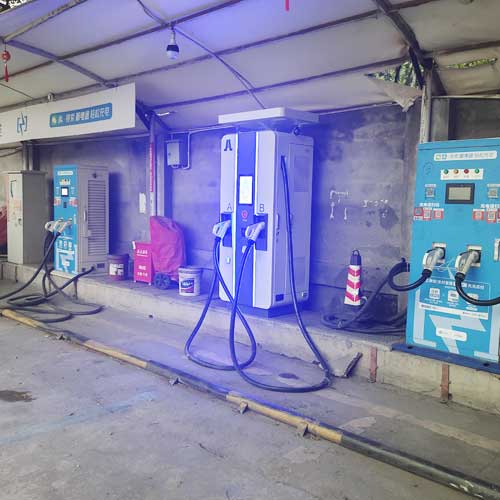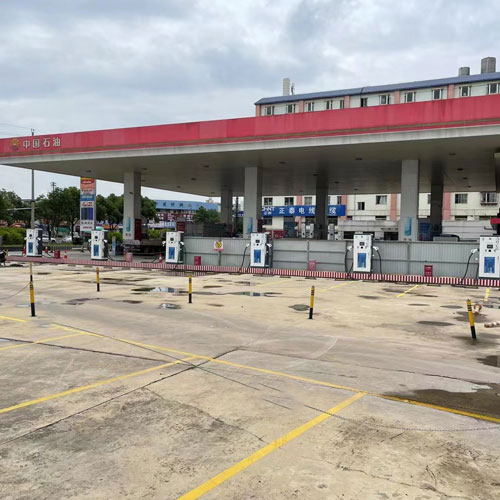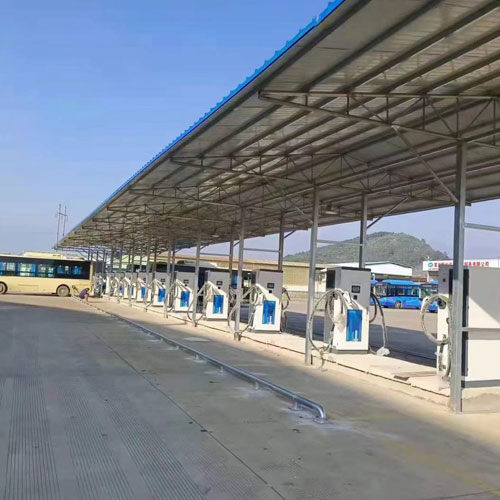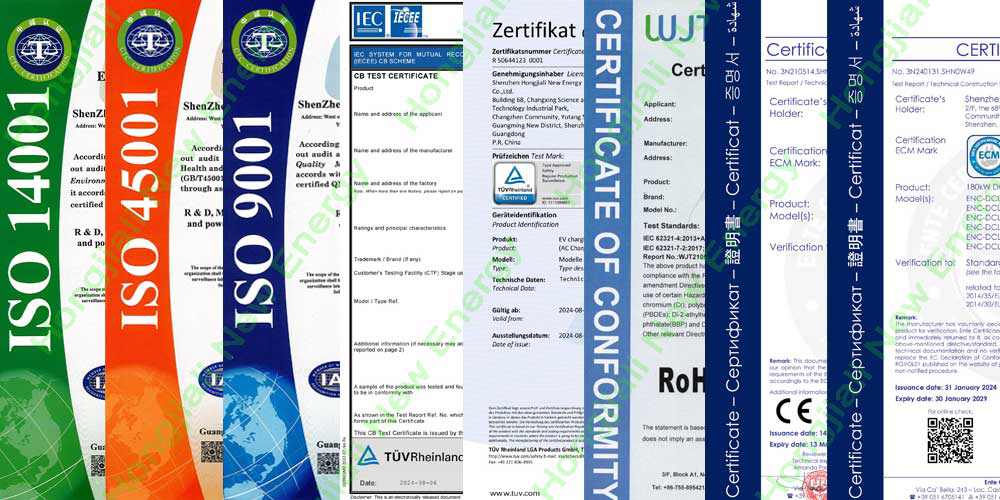-
 +86 18924678741
+86 18924678741 -
 sales@hjlcharger.com
sales@hjlcharger.com -
 Shenzhen City, Guangdong Province, China
Shenzhen City, Guangdong Province, China
The DC charging station is multi-standard, can charge up to 2 electric vehicles at the same time, and is flexibly configured to achieve fast charging of electric vehicles (EV). Are you looking for a quick and portable way to charge your electric car? Discover our DC charging stations, which provide efficient and reliable charging solutions. DC charging stations are ideal anywhere you need a quick charge before getting back on the road!
The basic parameters of the 240kw DC charging station are as follows:
Parameters | Requirements |
General Requirements | |
EV Charger Type | DC |
Charger Capacity | 240KW |
Equipment size | L770*W700*H1900(mm) |
Product Model NO. | ENC-DCL240B |
ANSI-DCL240B | |
JIS-DCL240B | |
Mounting | Ground-Mounted |
Input Requirements | |
AC Supply System | Three-Phase, 5 Wire AC system |
Nominal Input Voltage | AC380V±15% |
Input Frequency | 45-65Hz |
Environmental Requirements | |
Ambient Temperature Range | -25 to 55°C |
Ambient Humidity | 5 to 95% |
Storage Temperature | -40 to 70°C |
Mechanical Requirements | |
IP Ratings | IP 54 |
Cooling | Air-cooled |
Output Requirements | |
Number of Outputs | 2 |
Type of Each Output | 200-1000VDC |
Single Output Max.Current | 200/250Amp |
Power Factor | ≥0.99(50% load above) |
User Interface & Display Requirements | |
Display & Touch-Screen Size | 7 Inches Touch Screen with Shell |
User Authentication | QR Code/RFID Card /Password Login |
Metering Information | Consumption Units |
Communication Requirements | |
Communication between EVSE and Central server | Protocol (Optional) |
Interface between Charger and CMS | Ethernet/3G/4G/WIFI (Optional) |
Protection & Safety Requirements | |
Executive Standard | IEC 62196 2017, IEC 61851 2017, SAE J1772,CHAdeMO etc. |
Safety Parameters | Over Current, Over Voltage, Under Voltage, Residual Current, Surge Protection, Leakage Protection, Short Circuit, Over Temperature, etc. |














